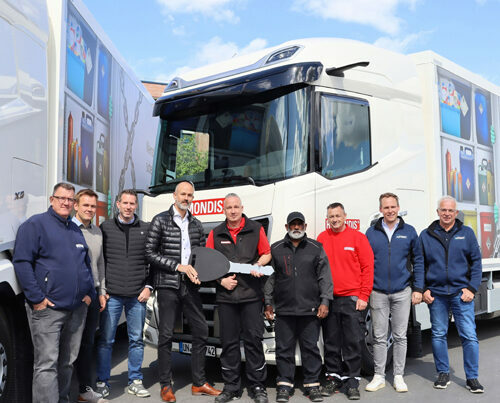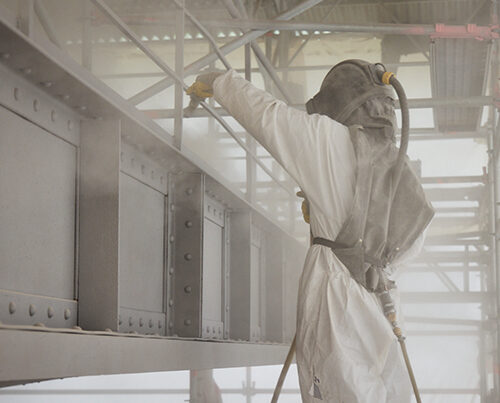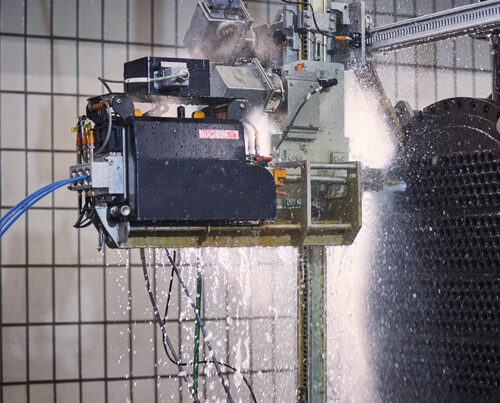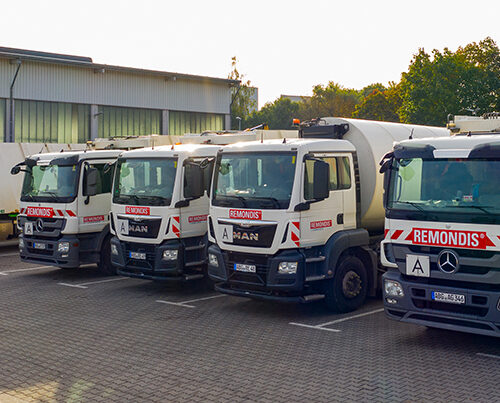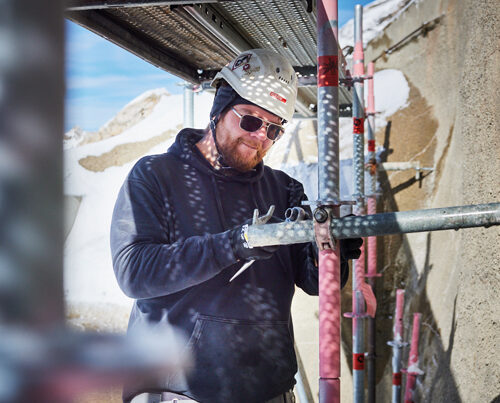A patented process
BUCHEN has a tradition of delivering innovations. For years now, the company has been driving forward progress in the industrial cleaning sector by coming up with its own novel systems. Its latest development: a patented process for cleaning cement kilns. An innovation that also clearly illustrates what the primary goals of BUCHEN’s development work are – namely to further increase customer benefit, environmental protection and safety levels.

The important work of removing deposits
As with any other type of production process, deposits build up in cement kilns over time. Steps must be taken at regular intervals, therefore, to remove these deposits so that the kilns continue to work efficiently and production operations run smoothly. Such work is usually carried out manually with the operatives entering the facility as soon as the kiln has cooled down sufficiently for them to be able to do so. Add together the time needed to shut down the kiln, to carry out the cleaning work (which can last several days) and to start the kiln back up again and operators find themselves facing a relatively long shutdown period. Which means, of course, that they are extremely interested in ways to shorten the length of such projects – and a good reason for BUCHEN to develop an innovative, time-saving alternative.
BUCHEN’s mission is to maximise customer benefit by delivering innovative services and deploying future-oriented technology.
Being a specialist for cleaning power stations, boiler plants, incineration plants and steam-generating plants, BUCHEN KraftwerkService has created a process that enables the sections of cement kilns most affected by build-ups to be cleaned without the operatives actually having to climb into the area itself. The company has solved this conundrum by combining automation and high pressure water jetting technology: two of the BUCHEN Group’s areas of expertise and two key areas of its service portfolio.
This new system offers some significant practical advantages. As it is automated, the actual cleaning process can be completed far more quickly.
Faster, better, safer
This new system offers some significant practical advantages. As it is automated, the actual cleaning process can be completed far more quickly. In addition, less time is needed for the kiln to cool down as the equipment can cope with much higher temperatures. Besides saving time, this system further improves the quality of the cleaning results as BUCHEN KraftwerkService makes the most of the remaining heat and the thermal movement of air to ensure the deposits are broken down in the best possible way.
BUCHEN has helped to significantly advance the industrial cleaning sector thanks to its automated systems and processes.
This pioneering process only uses high pressure water – no additional cleaning agents are deployed. This, of course, means greater environmental benefits and lower waste management costs. It is also a particularly safe system for operatives as the work is carried out from a distance – an advantage that effectively eliminates the potential risks of manual cleaning work. At the same time, it reduces the level of strain the staff have to deal with as manual high pressure jetting is always physically challenging work.
First projects have brought excellent results
This automated system has now been used on different kinds and different sizes of cement works. And the results have shown that BUCHEN has easily met the goals it set itself: depending on the type of plant and the cleaning requirements, BUCHEN KraftwerkService needed up to 80% less time to complete the project. And, in the best case scenario, the costs for the customers were reduced by up to 60%. Clear proof, therefore, that BUCHEN’s innovations help drive success – both for its customers and for its own business.
A more detailed look at the technology
At the heart of this patented process is an automated high-pressure machine equipped with a robust high-pressure pump and tank cleaning head. The tank cleaning head is inserted into the cement kilns’ cyclone preheaters and calciners, i.e. into the sections that are most impacted by deposit build-ups. The cleaning process begins with the opening of the first access point. Controlled from outside the kiln, the tank cleaning head can move freely around the area it is cleaning – even in very tight spaces. Once the defined ratio of water pressure and discharge rate have been set, the high-pressure pump supplies the jet of high pressure water required to perform the work.
Image credits: image 1: Adobe Stock: 46828857, creator: mitifoto; image 2: © XERVON; image 3: © Greg Selph







